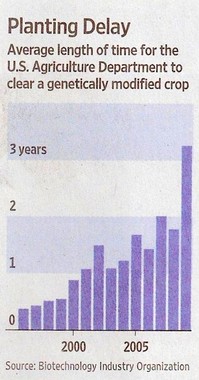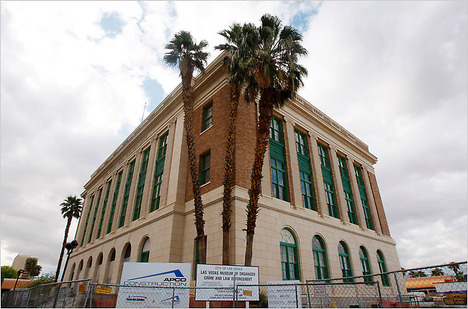Source of graph: scanned from the print version of the WSJ article quoted and cited below.
(p. A8) The crop-biotechnology industry, growing frustrated as it watches the approval time for new seeds almost double under the Obama administration, is pressuring Washington to clear inventions more quickly.
The logjam at the U.S. Department of Agriculture, which must clear genetically modified seeds, is slowing the launch of products that could give farmers more alternatives to seeds from crop biotech giant Monsanto Co.
Also, some biotech-industry executives worry the delays signal that the Obama administration, which has painted itself as pro-biotech, is gearing up for a far tougher analysis of the potential environmental impact of these crops, which could make it harder for inventions to reach the marketplace.
On average, a genetically modified seed takes 1,188 days to pass federal scrutiny, almost twice as long as in 2008, the last year of the Bush administration, according to the Biotechnology Industry Organization, a Washington, D.C., trade group.
“There is concern we might see other countries move ahead of the U.S.,” said Sharon Bomer Lauritsen, executive vice president of food and agriculture at BIO, who added that the delays “might stifle investment in what has been a very dynamic part of the U.S. economy.” BIO’s members include hundreds of companies such as DuPont Co., Syngenta AG and Monsanto, as well as academic institutions.




